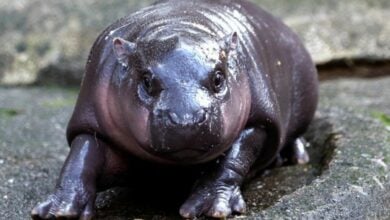World News
Explore the latest global news with The Thaiger’s World News page, your comprehensive source for international updates. We’ve got breaking news, insightful analysis, and exclusive stories from around the globe, covering politics, business, technology, and culture. Stay informed about the world’s most pressing issues, emerging trends, and influential events, as well as updates on travel, lifestyle, and entertainment.
The Thaiger is your go-to platform for staying connected with the ever-changing world we live in. To keep up with the most reliable international news source, subscribe to our newsletter and follow us on social media.
-
 Sponsored
Sponsored Top 10 reasons for expats to get a comprehensive health insurance in Thailand
Moving to Thailand offers plenty of excitement and adventure, but the local healthcare system can be complex to navigate as an expat. From unique health risks to high costs at private hospitals, having a comprehensive health insurance plan is essential....
-

Man busted in UK smuggling cannabis from Thailand to clear debt
A down-and-out drug mule took a gamble to clear his debt to his own mother – and lost big-time at Manchester Airport. Dean Pharoah, who owed cash to his mum, tried to smuggle over £200,000 (approximately 8 million baht) worth of cannabis into the UK after a holiday in Thailand. But UK Border Force officers had their suspicions and swooped…
-

AirAsia plans low-cost hubs in Bangkok and Kuala Lumpur
Well-known discount airline AirAsia is setting its sights on replicating the global connectivity success of Dubai but with a low-cost twist centred in Bangkok and Kuala Lumpur. After navigating the challenges posed by the Covid-19 pandemic, the airline is eager to expand its network and leave its tumultuous past during the pandemic behind. Tony Fernandes, the founder of AirAsia, envisions using…
-

Thai worker abandoned in Israel after hospital discharge (video)
A Thai worker in Israel who, after being discharged from the hospital, found himself abandoned by his employer at a workers’ camp. The man, unable to recall any personal details, has since disappeared from his accommodation, leaving both his family and fellow workers anxious for his wellbeing. A TikTok user, identified as @jacaky2538, who is also a Thai worker in…
-

Thai Lion Air eyes new route to boost Nakhon Phanom tourism
Thai Lion Air is contemplating expanding its flight operations to Nakhon Phanom, in line with the Thai government’s strategy to boost tourism in lesser-known cities. This move is part of an initiative to transform secondary tourism cities into bustling hubs. Deputy Transport Minister Manaporn Charoensri has tasked the Department of Airports (DoA) with exploring avenues to increase flight frequency to…
-

Bangkok Airways employs French jets to support tourist surge
As Thailand’s tourist influx hits an all-time high, Bangkok Airways is scrambling to keep up, turning to France for reinforcements. In a bid to tackle its aircraft shortage, Bangkok Airways (PG, Bangkok Suvarnabhumi) has secured a wet-lease deal with French airline Amelia (8R, Paris Le Bourget), which will provide two Airbus narrowbody aircraft to support the Thai carrier’s operations over…
-

Labour icon John Prescott dies at 86, leaves lasting legacy (video)
The world has bid a fond farewell to controversial former British Deputy Prime Minister John Prescott, who died at the age of 86. Prescott, a political firebrand, and a cornerstone of Tony Blair’s New Labour movement was a custodian of traditional Labour values. He died peacefully in a care home, surrounded by his beloved family and the soothing melodies of…
-

Aussie teen dies in Bangkok after Laos poisoning, 4 dead
One of the Melbourne teenagers on an idyllic backpacking adventure in Asia has died in a Bangkok hospital from a suspected methanol poisoning incident in Laos. Bianca Jones, a 19 year old Australian tourist, became the latest person to die from a suspected methanol poisoning incident in Laos after drinking vodka shots. The Aussie teen’s death is the fourth in…
-

Flight chaos: Air India passengers twice-stranded in Phuket
Over 100 passengers on an Air India flight to New Delhi found themselves stranded in Phuket for over 80 hours, enduring a string of delays due to persistent technical issues with their aircraft. The saga began when the flight, initially scheduled for departure on the night of November 16, was postponed by six hours, with the airline citing technical faults…
-

THAI to fly wide-body jets on domestic routes this December
In a move that’s sure to delight frequent flyers, Thai Airways (THAI) revealed plans to swap its trusty A320s for luxurious wide-bodied aircraft on select domestic routes this December, just in time for the peak holiday season. The airline is ramping up capacity to accommodate the soaring demand during the Christmas-to-new year rush, from December 20 to 31. While official…
-

Thailand partners with Turkey to build high-speed rail empire
Thailand is gearing up to transform its rail landscape by partnering with Turkey’s state-owned train manufacturer, Türasaş, in a bold step towards high-speed travel. Transport Minister Suriya Jungrungreangkit revealed on Monday, November 18, that the collaboration aims to boost Thailand’s transport sector and establish a domestic rail manufacturing industry. During his recent visit to Türasaş’s Sakarya facility in Turkey, Suriya…
-

Thai smile, Roman style: New Italy-Thailand flight to boost tourism
Thailand just got a little closer to Italy. The inaugural ITA Airways direct flight from Rome to Bangkok touched down at Suvarnabhumi Airport, marking the beginning of a new era for tourism and business travel between the two countries. This direct route, running five times a week, offers Italian travellers a smoother journey to Thailand’s famous beaches, cultural sites, and…
-

Airlines to add 73,000 seats for new year travel in Thailand
Six airlines are set to increase their seat offerings by over 73,000 during the new year period to prevent excessive price hikes during the festive season. This effort, led by the Transport Ministry, involves collaboration with Thai Airways International and other members of the Airlines Association of Thailand (AAT), including Bangkok Airways, Thai AirAsia, Nok Air, Thai Lion Air, and…
-

High ambitions: Suvarnabhumi aims to triple transit traffic by 2030
Suvarnabhumi Airport, Thailand’s busiest international gateway, is gearing up for a major transformation to become Southeast Asia’s ultimate transit hub. Airports of Thailand (AOT) plans to raise the airport’s transit flights from a mere 4% to a soaring 20% as part of an ambitious master plan to rank among the world’s top 20 airports by 2030. This bold goal is…
-

Thai Airways cash turbulence: Will shareholders give a capital lift-off?
In a dramatic twist, shareholders of Thai Airways International (THAI) are in a heated debate over whether to pump more cash into the airline, despite its recent financial turnaround. With a shiny rehabilitation plan in place, which includes a bold proposal for capital injection, the airline’s comeback story is under the microscope. Central to this saga is the question of…
-

Naked intruder found living under Los Angeles home for six months
A woman discovered an unexpected intruder living beneath her Los Angeles home for approximately six months. The 93 year old found a naked man hiding in a small underground space, prompting police intervention to remove him. Despite efforts involving police dogs and tear gas, the man resisted leaving. Police identified the man as 27 year old Isaac Betancourt, who was…
-

Suvarnabhumi soars as UNESCO’s most beautiful airport (video)
In a triumph for Thai architecture, Suvarnabhumi International Airport has been hailed by UNESCO as one of the top six most beautiful airports globally for 2024. But that’s not all, the airport’s SAT-1 building has also bagged a nomination for the prestigious Prix Versailles Award for the most stunning airport design on the planet, with results set to be revealed…
-

Thai Airways joins backlash against Rolls-Royce delays
Thai Airways (THAI) is fed up with Rolls-Royce, joining a growing backlash over delays in jet engine maintenance that’s forcing its fleet into prolonged downtime. CEO Chai Eamsiri has revealed that the airline’s Boeing 787 Dreamliners are now waiting up to 120 days for engine maintenance, a stark increase from the previous 90-day standard—a time frame he already considered frustrating.…
-

DHL Thailand’s new multimodal hub to revolutionise logistics
DHL Global Forwarding Thailand is upping the ante in the logistics game with the launch of its brand-new International Multimodal Hub in Bangkok, a 480-square-metre facility at Suvarnabhumi Airport’s Free Zone 3. This cutting-edge hub not only positions Thailand as a logistics powerhouse in Southeast Asia but also offers seamless connections across road, air, and sea, streamlining the entire supply…
-

Suvarnabhumi Airport to offer early check-in by February
Suvarnabhumi International Airport is set to introduce an early check-in service, allowing passengers to complete their check-in process up to 24 hours before departure. This initiative, announced on the Transport Ministry’s social media platform, is aimed at enhancing traveller convenience and reducing congestion at Thailand’s primary international gateway. Airports of Thailand (AoT) President Kerati Kijmanawat indicated that the service is…
-

Pilotless ‘air taxis’ takes first flights above Bangkok (video)
Chinese aviation tech company EHang made history by launching its EH216-S pilotless electric vertical take-off and landing (eVTOL) aircraft in Thailand. The debut passenger flights, held at the Thailand Drone Exhibition & Symposium 2024, mark a major milestone as Thailand becomes the 18th country to host EHang’s futuristic eVTOL flights. With the Civil Aviation Authority of Thailand (CAAT) leading the…
-

THAI union fights to keep government out of airline’s rehab plan
Thai Airways International (THAI) staff are up in arms, rallying against what they see as an attempt by the government to seize control of the airline under the guise of a rehabilitation plan amendment. The airline’s labour union staged a peaceful but determined protest outside THAI headquarters yesterday, November 8, holding up placards and calling on creditors to reject the…
-

Scottish pervert hiding in Thailand for 40 years extradited and jailed
In a landmark case for Scottish police, a pedophile who fled to Thailand has finally been jailed, decades after committing a series of horrifying sexual crimes against children. The deviant Scotsman, 74 year old John Martin, was extradited from Bangkok to Scotland in December last year, facing justice at last for historical abuse offences uncovered by a painstaking investigation led…
-

Phuket Airport boosts efficiency with facial recognition technology
Phuket Governor Sophon Suwannarat made an appearance at Phuket International Airport yesterday, November 8, marking a significant advancement in passenger processing through the launch of facial recognition technology. This initiative aims to streamline procedures and cut down on wait times for travellers. Phuket International Airport introduced this advanced system for domestic flights last week, with plans to extend it to…
-

Airport initiative boosts culture and economy in northern Thailand
Phitsanulok and Nan airports have introduced an innovative Live Airport concept aimed at highlighting the cultural identities of these provinces while generating sustainable economic benefits for local communities. The initiative was inaugurated on November 1 and seeks to position airports as not only transit points but also as cultural gateways into the region. Deputy Transport Minister Manaporn Charoensri, accompanied by…
-

Thailand appetite for exports, food security at key China summits
Promoting Thailand’s exports and tackling food security issues have taken centre stage at two significant regional meetings in China, as declared by Prime Minister Paetongtarn Shinawatra yesterday, November 6. The 38 year old Thai PM is participating in the 8th Greater Mekong Subregion (GMS) Economic Cooperation Summit and the 10th Ayeyawady-Chao Phraya-Mekong Economic Cooperation Strategy (ACMECS) summit, both held in…
-

Thailand-US ties remain strong despite US election outcome
Thailand maintains a robust diplomatic relationship with the United States, a bond that Foreign Affairs Minister Maris Sangiampongsa believes will endure regardless of Donald Trump’s US presidential election victory. Speaking yesterday at Wing 6’s Military Terminal 2 in Bangkok’s Don Mueang district, Maris conveyed confidence in the continuity of bilateral ties, highlighting their historical strength and mutual goals. “Our relationship…
-

PM Paetongtarn attends key regional conferences in China
Prime Minister Paetongtarn Shinawatra is set to attend two significant regional conferences in Kunming, China. These gatherings, scheduled today, November 6, and tomorrow, will precede her journey to Peru for the APEC summit on Sunday, as confirmed by Jirayu Houngsub, spokesperson for the Prime Minister’s Office. The initial conference is the 8th Greater Mekong Subregion Economic Cooperation Programme Summit (GMS…
-

Taxi driver caught with drugs and knives at Phuket Airport
A taxi driver was apprehended at Phuket International Airport after a routine checkpoint revealed knives and two methamphetamine pills in his vehicle. This incident unfolded yesterday, November 4, during a security sweep conducted by the airport’s security team alongside Sakhu Police. The checkpoint operation, running from 10am to midday, was established to uphold traffic laws and deter any illegal substances…
-

UK’s Haggis the pygmy hippo takes on Thailand’s Moo Deng
Move over, Moo Deng—there’s a new pygmy hippo on the block! Edinburgh Zoo proudly announced the birth of Haggis, their very own pint-sized star, born to hippo parents Otto and Gloria. This adorable Scotland native may soon be vying for viral fame against Thailand’s superstar, Moo Deng. The zoo made the big reveal on X (formerly Twitter), quipping, “Moo Deng?…
-

Moo Deng picks Trump: Baby hippo makes US election prediction (video)
In a bizarre twist of international fanfare, Thailand’s beloved baby pygmy hippo, Moo Deng, has waded into the 2024 US presidential race with her vote—and it’s got social media roaring. Just one day before the American Election Day, this Internet-famous hippo from Khao Kheow Open Zoo in Chon Buri made her pick clear in a delightfully fruity showdown. In a…
Broke? Find employment in Southeast Asia with JobCute Thailand and SmartJob Indonesia. Rich? Invest in real estate across Asia with FazWaz Property Group or get out on a yacht anywhere with Boatcrowd. Even book medical procedures worldwide with MyMediTravel, all powered by DB Ventures.






























